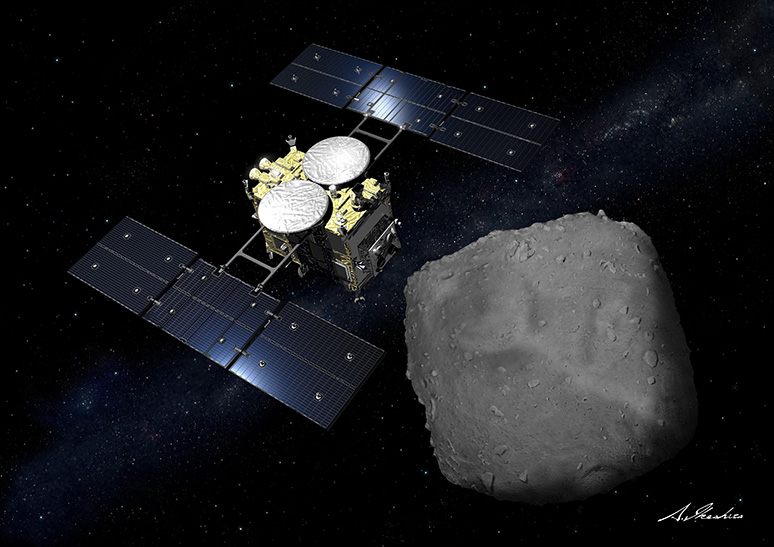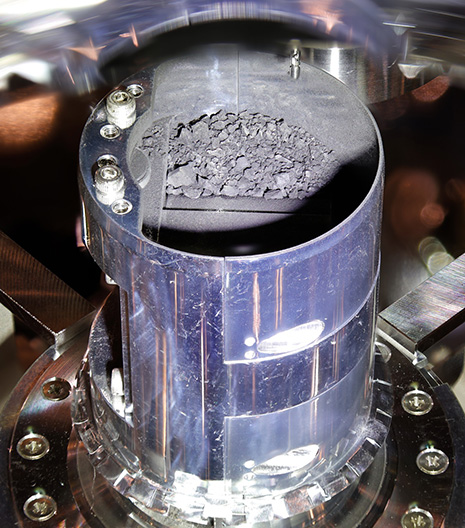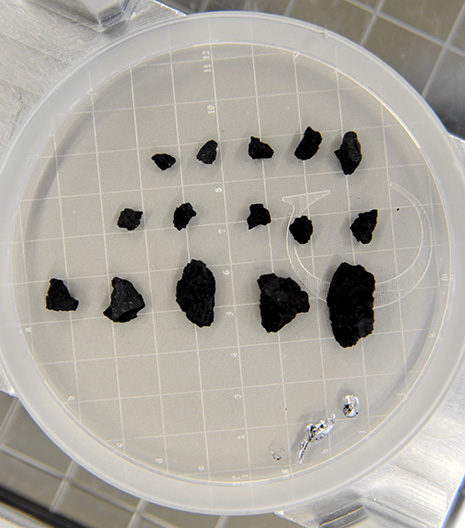VOL.195 AUGUST 2024
EXPLORE THE UNIQUE CHARM OF MANGA IN JAPAN
[Science and Technology] Probing the Birth of Earth and the Origin of Life: The Asteroid Exploration Technology of Hayabusa2

Hayabusa2 upon arrival at the asteroid Ryugu.
©︎ Akihiro Ikeshita
In December 2020, JAXA’s Asteroid Explorer Hayabusa2 successfully returned to Earth and brought back some rock and sand samples from the asteroid Ryugu, after a long journey of 5.24 billion kilometers. The samples from Ryugu, which orbits the sun between Mars and Earth, are expected to provide important clues to solving the mysteries of the formation of the solar system, the birth of Earth, and the origin of life.
Hayabusa2 is the much-improved successor to the first Hayabusa, an unmanned probe that in June 2010 became the world’s first spacecraft to successfully retrieve samples from the surface of the asteroid Itokawa*. In order to refine the technology for asteroid exploration, the mission took on various challenges using methods such as a guidance and control technology for ultra-precise pinpoint touchdown, an impactor for artificial crater formation experiments, the first Ka band** high-speed communication technology on a Japanese deep-space*** spacecraft, and four on-board surface exploration robots.
The 1.3 million asteroids discovered to date are classified into different types according to their main components, which are inferred from their color through telescopic observations. Ryugu has been classified as a C-type (carbonaceous) asteroid, meaning that it is rich in carbon. Scientists have speculated that Ryugu has primitive characteristics that date back to the formation period of the solar system.
Hayabusa2, which left Earth in December 2014 and arrived at Ryugu in June 2018 after a journey of approximately three and a half years, began preparations for a touchdown to collect samples of the asteroid’s composition matter. The original plan was to find a flat area 100m in diameter in which to execute a touchdown. However, there was no flat area large enough on Ryugu, and the one that was finally found was a circle with a diameter of 6m, a much smaller space than anticipated. There, the probe first dropped a target marker, a small artificial ball, at the intended landing site and then thoroughly measured its location with relative to the landing target point using the on-board camera. The team also drastically modified the spacecraft onboard software to refine the landing accuracy, until at last a successful touchdown was achieved. The high-precision touchdown had an error range of just 1m. At the subsequent second touchdown, the impactor was detached from Hayabusa2 and collided with the surface of Ryugu at high speed, creating an artificial crater and allowing the exposed subsurface material to be collected.

Photo:JAXA
After the long journey back to Earth, Hayabusa2 released the reentry capsule containing the collected samples of rock and sand, including subsurface material over the Woomera desert region in South Australia, where it was safely recovered. The weight of the collected samples was 5.4 grams, significantly more than originally planned. Analysis and research of the samples is still ongoing, but the presence of water and dozens of types of amino acids has already been confirmed. Amino acids are organic substances that form the basis of life. This is expected to provide an important clue in unraveling the mystery of the origin of life in the earliest days of the solar system.

Photo:JAXA

Photo: JAXA
This Hayabusa2 mission was awarded the FY2024 Commendation for Science and Technology by the Minister of Education, Culture, Sports, Science and Technology (Development Category) for its contribution to the advancement of solar system exploration technology and the others. Based on the results of this mission, Hayabusa2 is now taking on the challenge of new asteroid exploration. Since asteroids are believed to be the parent bodies for most of the meteorites that fall to Earth, the establishment of technology to accurately navigate probes around asteroids and the acquirement of observational data from close range are expected to contribute to planetary defense, a set of measures to avoid possible future meteorite impacts.
*An S-type asteroid (composed mostly of silicates) orbiting close to Earth.
**A high-frequency band used to communicate with satellites, enabling high-capacity, high-speed data transmission.
***An area in the solar system outside Earth’s gravitational sphere. Generally, space where the distance from Earth is more than 2 million kilometers.
By FUKUDA Mitsuhiro
Photo: JAXA, Akihiro Ikeshita

